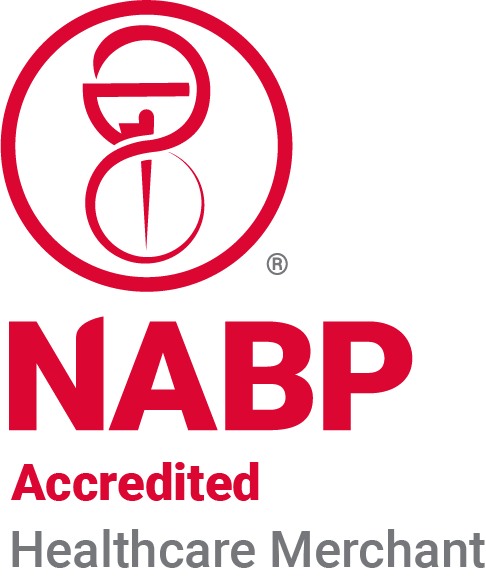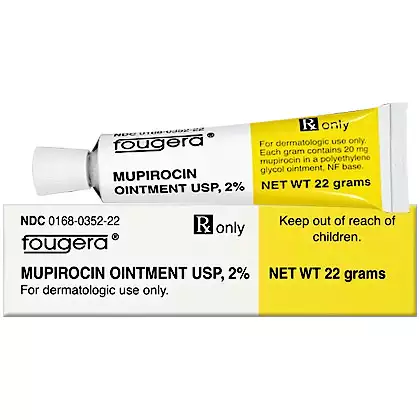Providing Quality & Trust
Mupirocin Ointment
No Info
Starting at $10.45
$10.45 Each
Detailed Description
Mupirocin, Ointment
(myoo-pye-roe-sin)
- Description: Topical agentto treat bacterial infections
- Other Names for this Medication: Pseudomonic Acid A®, Bactroban®, Muricin®
- Common Dosage Forms: Veterinary: 2% Ointment.
- Antimicrobial Classification: Highly Important
Product is applied to the skin twice daily to treat bacterial infections. Labeled for use in dogs. Do not apply close to the patient’s eyes. Prevent animal from licking or grooming the area for atleast 20 to 30 minutes after application to prevent side effects related to ingesting the product and to allow for sufficient contacttime with the wound/sore. Side effects are rare when used as directed. Dispose of packaging and unused productin regular trash. Do notrinse down drain.
How is this medication useful?
The FDA (U.S. Food & Drug Administration) has approved this drug for use in dogs for treating bacterial infections on the skin. The FDA allows veterinarians to prescribe and use products containing this drug in different species or for other conditions in certain situations. You and your veterinarian can discuss why this drug is the most appropriate choice.
Indications/Actions:
Mupirocin is FDA-approved for treating infections in dogs (eg, superficial pyoderma, fold pyoderma, interdigital cysts, draining tracts, acne, pressure point pyodermas) caused by susceptible strains of Staphylococcus aureus or Staphylococcus pseudintermedius, including beta-lactamase producing and methicillin-resistant strains. It may also be of use in other species and conditions (eg, feline acne, equine pyoderma, interdigital abscesses, pressure point pyodermas). Mupirocin also shows activity against other gram-positive pathogens, including strains of Corynebacterium spp, Clostridium spp, Proteus spp and Actinomyces spp. A possible effect against Malassezia spp in dogs and cats has been anecdotally reported.
Mupirocin is not related structurally to other commercially available antibiotics and acts by inhibiting bacterial protein synthesis by binding to bacterial isoleucyl transfer-RNA synthetase. While bacterial resistance is rare, resistant strains of Staphylococcal aureus and Staphylococcus pseudintermedius have been identified and resistance transference is thought to be plasmid-mediated. It is thought that resistance occurs more frequently when mupirocin is used over a prolonged period and over larger areas of skin; therefore, it may be best to use mupirocin for short-term treatment and on small, localized areas. Cross-resistance with other antimicrobials has not been identified. Because this antibiotic is an important treatment used in humans with resistant infections, it is wise to limit its use to select or resistant cases in veterinary patients. Mupirocin also has activity against some gram-negative bacteria, but it is not used clinically for gram-negative infections. Pseudomonas spp is particularly resistant to mupirocin.
Mupirocin is not significantly absorbed through the skin into systemic circulation but does penetrate well into granulomatous deep pyoderma lesions. It is not suitable for application to burns.
Suggested Dosages/Use:
Mupirocin is labeled for twice daily application on dogs. It requires 10 minutes of contact time to be active. In cats with chin acne, once- to twice-daily applications have been shown to be efficacious in treating the secondary infection.
What are the side effects of this medication?
Side effects that usually are not serious include:
- Pain, redness, and itching atthe application site.
If any of these signs are severe, worsen, or continue to be a problem, contact your veterinarian.
Side effects that may be serious orindicate a serious problem:
- Increased thirst and/or urinating more than usual
- Vomiting
- Poor appetite
- Low energy level
- Worsening of the skin problem
If you see any of these side effects, contact your veterinarian immediately.
Precautions/Adverse Effects:
Mupirocin is contraindicated in patients with a history of hypersensitive reactions to it or other ointments containing polyethylene glycol. Because the ointment has a polyethylene glycol base, the manufacturer warns that nephrotoxicity may potentially develop if used on extensive deep lesions. Avoid contact with eyes.
Mupirocin appears to be very well tolerated; contact reactions (eg, pain, erythema, itching) are possible but thought to occur rarely. Overgrowth of nonsusceptible organisms (superinfection) is also possible with prolonged use. Anecdotally, very rare renal toxicity has been reported.

Powered by nopCommerce
This site is running in live payment mode. Real payments will be processed.

